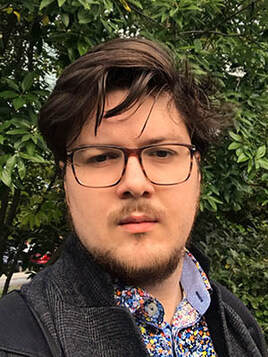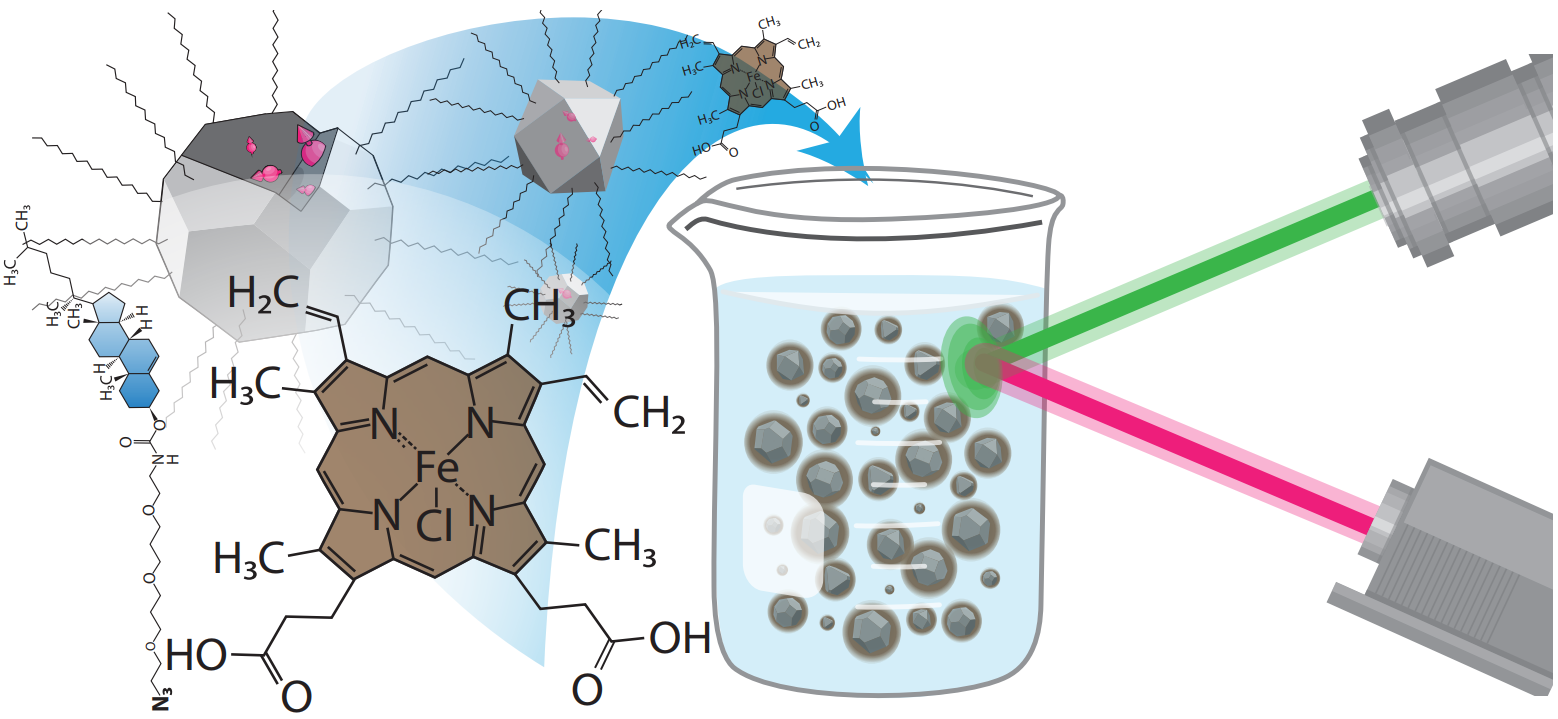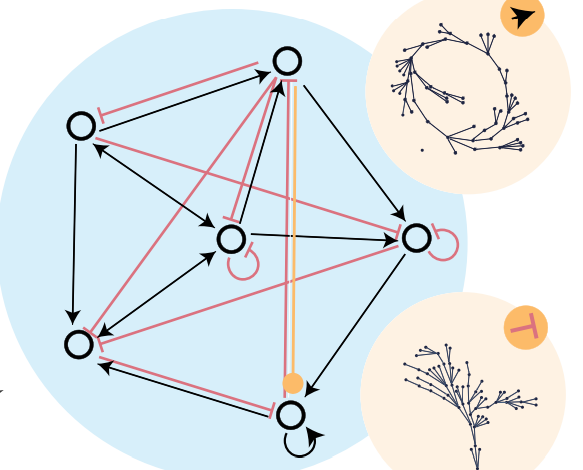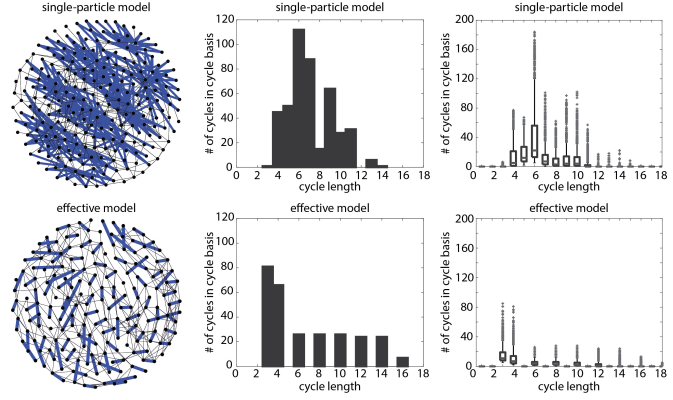
Mathieu Ouellet
Ph.D. Student, Electrical Engineering
200 S. 33rd St
201 Moore Building
Philadelphia, PA 19104
Email: ouellet@seas.upenn.edu
Phone: (215) 898-8312
Fax: (215) 573-2068
Mathieu received a B.S. in Physics, a B.S. in Computer Science and a M.Sc. in Applied Mathematics from the University of Quebec. His research focused on supersymmetric representation of solutions of the Sturm-Liouville problem and on quantification of mitochondrial networks. His current research interests include complex systems, network science and quantum systems.

Shulevitz, Henry J.; Amirshaghaghi, Ahmad; Ouellet, Mathieu; Brustoloni, Caroline; Yang, Shengsong; Ng, Jonah J.; Huang, Tzu-Yung; Jishkariani, Davit; Murray, Christopher B.; Tsourkas, Andrew; Kagan, Cherie R.; Bassett, Lee C.
Nanodiamond emulsions for enhanced quantum sensing and click-chemistry conjugation Journal Article
In: ACS Applied Nano Materials, vol. 7, iss. 13, pp. 15334-15343, 2024.
@article{Shulevitz2024,
title = {Nanodiamond emulsions for enhanced quantum sensing and click-chemistry conjugation},
author = {Henry J. Shulevitz and Ahmad Amirshaghaghi and Mathieu Ouellet and Caroline Brustoloni and Shengsong Yang and Jonah J. Ng and Tzu-Yung Huang and Davit Jishkariani and Christopher B. Murray and Andrew Tsourkas and Cherie R. Kagan and Lee C. Bassett},
url = {https://pubs.acs.org/doi/abs/10.1021/acsanm.4c01699},
doi = {10.1021/acsanm.4c01699},
year = {2024},
date = {2024-06-29},
urldate = {2023-12-04},
journal = {ACS Applied Nano Materials},
volume = {7},
issue = {13},
pages = {15334-15343},
abstract = {Nanodiamonds containing nitrogen-vacancy (NV) centers can serve as colloidal quantum sensors of local fields in biological and chemical environments. However, nanodiamond surfaces are challenging to modify without degrading their colloidal stability or the NV center’s optical and spin properties. We present a simple and general method to coat nanodiamonds with a thin emulsion layer that preserves their quantum features, maintains their colloidal stability, and provides functional groups for subsequent cross-linking and click-chemistry conjugation reactions. To demonstrate this technique, we decorated nanodiamonds with combinations of carboxyl- and azide-terminated amphiphiles that enable conjugation using two different strategies. A theoretical model is developed to understand the effect of the emulsion layer on the NV center’s spin lifetime, and T1 relaxometry is employed to quantify the nanodiamonds’ chemical sensitivity to paramagnetic ions. This general approach to nanodiamond surface functionalization will enable advances in quantum nanomedicine and biological sensing.},
keywords = {},
pubstate = {published},
tppubtype = {article}
}

Breitweiser, S. Alex; Ouellet, Mathieu; Huang, Tzu-Yung; Taminiau, Tim H.; Bassett, Lee C.
Quadrupolar resonance spectroscopy of individual nuclei using a room-temperature quantum sensor Journal Article Forthcoming
In: Forthcoming.
@article{Breitweiser2024,
title = {Quadrupolar resonance spectroscopy of individual nuclei using a room-temperature quantum sensor},
author = {S. Alex Breitweiser and Mathieu Ouellet and Tzu-Yung Huang and Tim H. Taminiau and Lee C. Bassett},
url = {https://arxiv.org/abs/2405.14859},
year = {2024},
date = {2024-06-05},
abstract = {Nuclear quadrupolar resonance (NQR) spectroscopy reveals chemical bonding patterns in materials and molecules through the unique coupling between nuclear spins and local fields. However, traditional NQR techniques require macroscopic ensembles of nuclei to yield a detectable signal, which precludes the study of individual molecules and obscures molecule-to-molecule variations due to local perturbations or deformations. Optically active electronic spin qubits, such as the nitrogen-vacancy (NV) center in diamond, facilitate the detection and control of individual nuclei through their local magnetic couplings. Here, we use NV centers to perform NQR spectroscopy on their associated nitrogen-14 (14N) nuclei at room temperature. In mapping the nuclear quadrupolar Hamiltonian, we resolve minute variations between individual nuclei. The measurements further reveal correlations between the parameters in the NV center's electronic spin Hamiltonian and the 14N quadropolar Hamiltonian, as well as a previously unreported Hamiltonian term that results from symmetry breaking. We further design pulse sequences to initialize, readout, and control the quantum evolution of the 14N nuclear state using the nuclear quadrupolar Hamiltonian.},
keywords = {},
pubstate = {forthcoming},
tppubtype = {article}
}

Ouellet, Mathieu; Bassett, Dani S.; Bassett, Lee C.; Murphy, Kieran A.; Patankar, Shubhankar P.
Mechanical prions: Self-assembling microstructures Journal Article Forthcoming
In: Forthcoming.
@article{Ouellet2024,
title = {Mechanical prions: Self-assembling microstructures},
author = {Mathieu Ouellet and Dani S. Bassett and Lee C. Bassett and Kieran A. Murphy and Shubhankar P. Patankar},
url = {https://arxiv.org/abs/2402.10939},
year = {2024},
date = {2024-04-16},
abstract = {Prions are misfolded proteins that transmit their structural arrangement to neighboring proteins. In biological systems, prion dynamics can produce a variety of complex functional outcomes. Yet, an understanding of prionic causes has been hampered by the fact that few computational models exist that allow for experimental design, hypothesis testing, and control. Here, we identify essential prionic properties and present a biologically inspired model of prions using simple mechanical structures capable of undergoing complex conformational change. We demonstrate the utility of our approach by designing a prototypical mechanical prion and validating its properties experimentally. Our work provides a design framework for harnessing and manipulating prionic properties in natural and artificial systems.},
keywords = {},
pubstate = {forthcoming},
tppubtype = {article}
}

Ouellet, Mathieu; Kim, Jason Z; Guillaume, Harmange; Shaffer, Sydney M; Bassett, Lee C; Bassett, Dani S
Breaking reflection symmetry: evolving long dynamical cycles in Boolean systems Journal Article
In: New Journal of Physics, vol. 26, pp. 023006, 2024.
@article{Ouellet2024b,
title = {Breaking reflection symmetry: evolving long dynamical cycles in Boolean systems},
author = {Mathieu Ouellet and Jason Z Kim and Harmange Guillaume and Sydney M Shaffer and Lee C Bassett and Dani S Bassett},
url = {https://iopscience.iop.org/article/10.1088/1367-2630/ad1bdd/meta},
doi = {10.1088/1367-2630/ad1bdd},
year = {2024},
date = {2024-02-06},
journal = {New Journal of Physics},
volume = {26},
pages = {023006},
abstract = {In interacting dynamical systems, specific local interaction rules for system components give rise to diverse and complex global dynamics. Long dynamical cycles are a key feature of many natural interacting systems, especially in biology. Examples of dynamical cycles range from circadian rhythms regulating sleep to cell cycles regulating reproductive behavior. Despite the crucial role of cycles in nature, the properties of network structure that give rise to cycles still need to be better understood. Here, we use a Boolean interaction network model to study the relationships between network structure and cyclic dynamics. We identify particular structural motifs that support cycles, and other motifs that suppress them. More generally, we show that the presence of dynamical reflection symmetry in the interaction network enhances cyclic behavior. In simulating an artificial evolutionary process, we find that motifs that break reflection symmetry are discarded. We further show that dynamical reflection symmetries are over-represented in Boolean models of natural biological systems. Altogether, our results demonstrate a link between symmetry and functionality for interacting dynamical systems, and they provide evidence for symmetry's causal role in evolving dynamical functionality.},
keywords = {},
pubstate = {published},
tppubtype = {article}
}

Poteshman, Abigail N.; Ouellet, Mathieu; Bassett, Lee C.; Bassett, Dani S.
Network structure and dynamics of effective models of nonequilibrium quantum transport Journal Article
In: Physical Review Research, vol. 5, pp. 023125, 2023.
@article{Poteshman2023,
title = {Network structure and dynamics of effective models of nonequilibrium quantum transport},
author = {Abigail N. Poteshman and Mathieu Ouellet and Lee C. Bassett and Dani S. Bassett},
url = {https://journals.aps.org/prresearch/abstract/10.1103/PhysRevResearch.5.023125},
doi = {10.1103/PhysRevResearch.5.023125},
year = {2023},
date = {2023-05-26},
journal = {Physical Review Research},
volume = {5},
pages = {023125},
abstract = {Across all scales of the physical world, dynamical systems can be usefully represented as abstract networks that encode the systems' units and interunit interactions. Understanding how physical rules shape the topological structure of those networks can clarify a system's function and enhance our ability to design, guide, or control its behavior. In the emerging area of quantum network science, a key challenge lies in distinguishing between the topological properties that reflect a system's underlying physics and those that reflect the assumptions of the employed conceptual model. To elucidate and address this challenge, we study networks that represent nonequilibrium quantum-electronic transport through quantum antidot devices—an example of an open, mesoscopic quantum system. The network representations correspond to two different models of internal antidot states: a single-particle, noninteracting model and an effective model for collective excitations including Coulomb interactions. In these networks, nodes represent accessible energy states and edges represent allowed transitions. We find that both models reflect spin conservation rules in the network topology through bipartiteness and the presence of only even-length cycles. The models diverge, however, in the minimum length of cycle basis elements, in a manner that depends on whether electrons are considered to be distinguishable. Furthermore, the two models reflect spin-conserving relaxation effects differently, as evident in both the degree distribution and the cycle-basis length distribution. Collectively, these observations serve to elucidate the relationship between network structure and physical constraints in quantum-mechanical models. More generally, our approach underscores the utility of network science in understanding the dynamics of quantum systems.},
keywords = {},
pubstate = {published},
tppubtype = {article}
}
